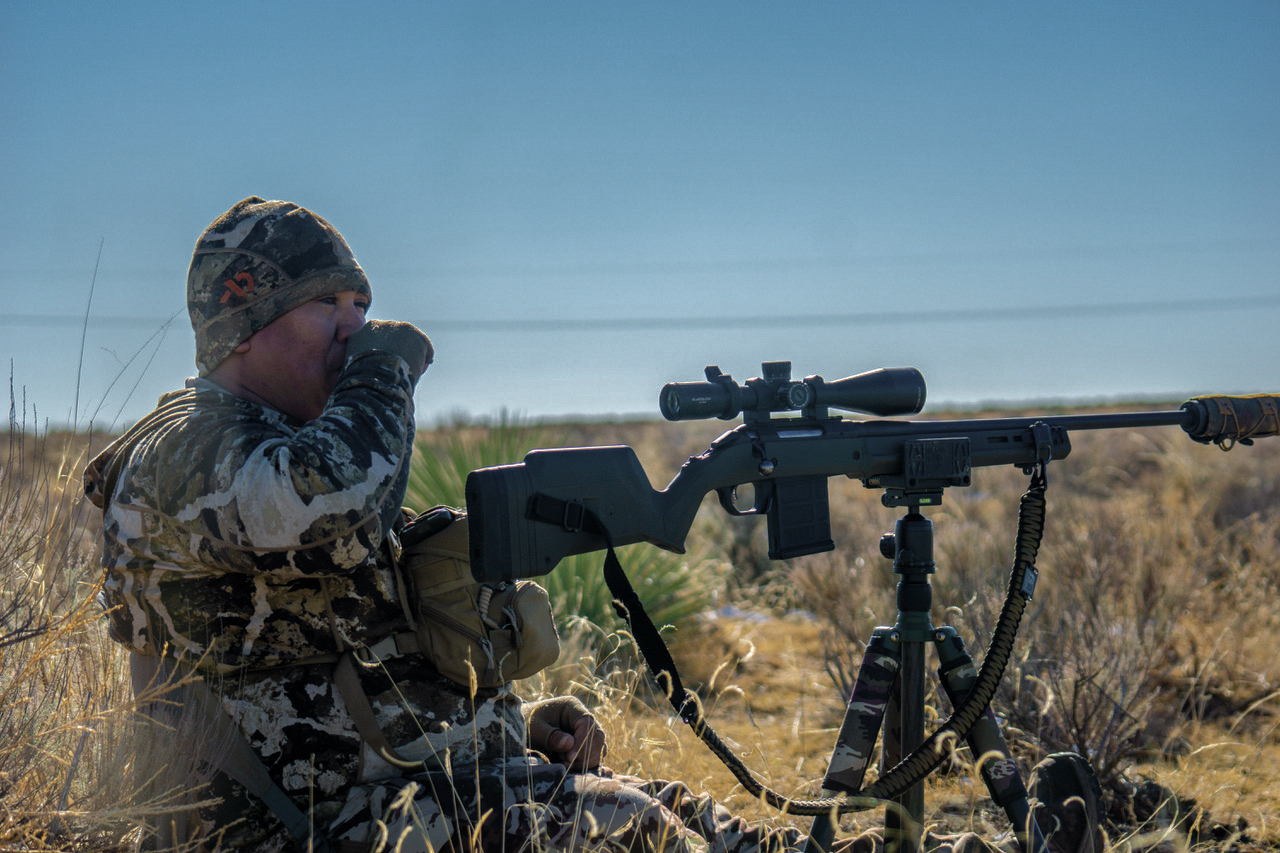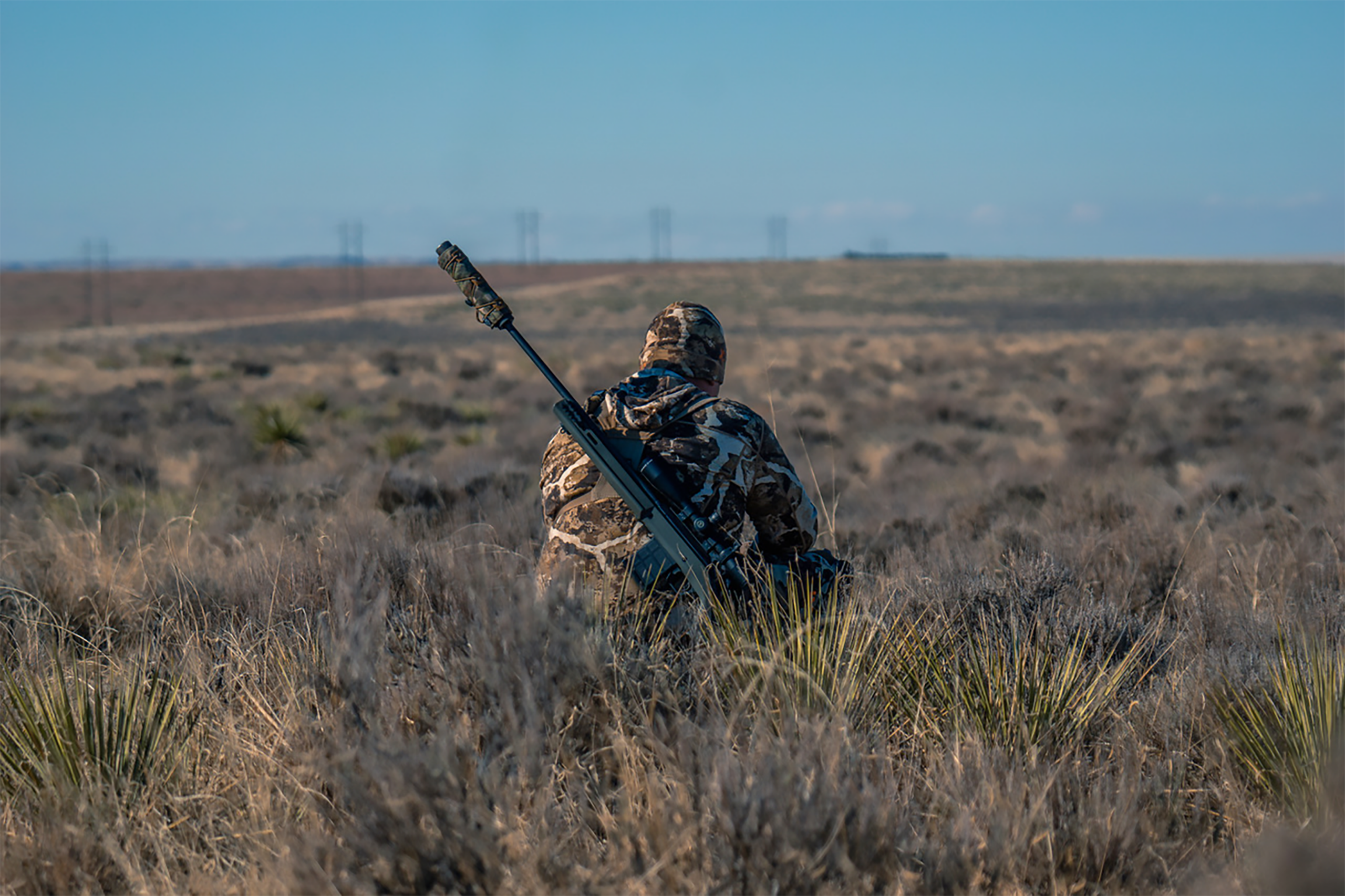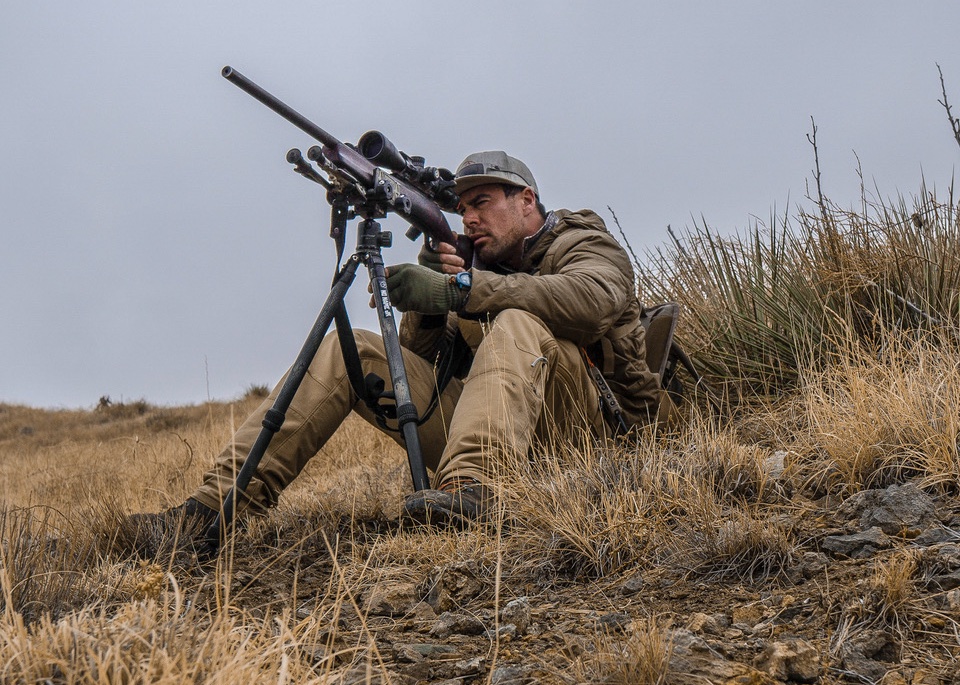
… is an art that takes years to master –
this article provides a solid foundation to build on
This post features insights from Athlon Pro Team predators Brandon Nily & Harley Tenorio + a video interview with Jesse Bunger and Harley Smith of Xplicit Outdoors

Coyotes are one of the most prolific predators on the planet.
Think about it this way – what other animal has been as targeted as coyotes are and have still managed to stay off the Endangered Species list?
Reproduction rate is a part of the equation, but so is their intelligence. Coyotes learn quickly and are able to adapt and thrive in a variety of environments. This makes coyotes a threat and a menace on a number of levels. It also makes hunting coyotes one of the most challenging and exhilarating experiences available to outdoorsmen today.
Coyote hunting is an art and it is one that takes years to master. Central to this discipline, regardless of a person’s level of experience, is coyote calling – the ability to lure these predators into your sights.
The purpose of this article is to cover some of the basics of coyote calling and we’ve called in a few experts to offer their advice on how to get started.
Electronic Calls (E-Calls) –
Electronic calls are battery-powered devices that consist of a speaker and a remote control unit that contains a bank of unique sounds to choose from. In addition to the ability to select from different call types, most E-Callers allow a person to adjust pitch and volume, which makes them highly versatile. Multiple makes and models are available, but the most popular are those made by Lucky Duck and Fox Pro. Both brands are highly recommended by the callers we interviewed for this post. Click here to learn more.
Hand Calls –
Hand calls are small devices that resemble rudimentary musical instruments (see picture below). Multiple sounds can be produced through hand calls by blowing through them and employing different techniques. The most popular types of hand calls include open, closed, and bite reed. Recommended brands for hand calls include Pinoy Piper and Fox Pro. A number of different custom options are available as well. Click here to learn more.
Diaphragm Calls –
Similar to hand calls, diaphragm calls produce a variety of sounds that are achieved through different blowing techniques. Using a diaphragm call will free a hunter’s hands, however, as they are inserted completely into the mouth of the caller. Brands that are recommended by our experts include Pinoy Piper, Fox Pro, and MFK. Click here to learn more.

Electronic Calls (E-Callers)
PROS
* Easy to use for beginners
* Ability to set call (and decoys) at a distance from the hunter’s shooting position
* Multiple sounds to choose from
* Ability to control volume and mix up the sound progression
* Mostly hands-free
CONS
* Coyotes become educated to the limited number of sounds that are available
* Batteries can run out or the device can fail
Hand Calls
PROS
* Sounds produced are more unique
* Always work (won’t break or run out of batteries)
CONS
* Takes more time and practice to learn and master
* Inability to place call away from shooting position
* Limited volume
Diaphragm Calls
PROS
* 100% hands-free operation
* Sounds produced are more unique
* Always work (won’t break or run out of batteries)
CONS
* Takes more time and practice to learn and master
* Inability to place call away from shooting position
* Limited volume

HOWLS – Coyote howls are one of the most versatile sounds in a hunter’s arsenal. They can be used year-round and are a great tool for finding coyote hot spots. Howls are particularly helpful when mapping and hunting a new area.
DISTRESS – Coyotes are constantly looking for food – especially during the winter months. Like all animals, the search for food is one of the primary instincts that drive and dictate behavior. For this reason, distressed prey calls (rabbit, mouse, bird, etc.) are very useful. Coyote pups are also on the menu, so distressed pup calls can be very useful as well – especially in the months of April and May.
FIGHT SOUNDS – A good fight always draws attention – this is true when it comes to coyotes as well. Fight sounds spark curiosity and are especially effective during mating season (January – February) when coyotes tend to be more aggressive and territorial.
These are just a few of the sounds that are available to coyote callers, but they are some of the most important. Regardless of which sounds you choose to use, our experts say it is important to mix them up. Spend about 15-25 minutes in each location before moving on to the next. Also, be patient. As with any type of hunting, some days will be more productive than others.

Coyote hunting, like any other shooting or hunting discipline, can be overwhelming for those who are just getting started. Here are a few tips from some of our favorite pro predators.

Coyote hunting is an exhilarating experience, but it also fulfills a very important function.
In addition to breeding at an alarming rate, coyotes are opportunistic predators that will consume anything they can sink their teeth into. This includes livestock (especially calves) that many people depend on for their livelihood. It also includes chickens, pets, and a number of birds and animals that sportsmen enjoy hunting and consuming throughout the year. Hunting coyotes helps keep the population in check and reduces these losses.
Whether you are an experienced hunter or just getting started, coyote hunting is a great opportunity to have fun and help maintain balance in the places we call home.

Matt Broxterman, author of this article, is an avid 3-Gunner who also competes in pistol and PRS matches. In addition to managing the Pro Team for Athlon Optics, he processes requests for match sponsorship and helps with a variety of other responsibilities for the Athlon marketing team.
